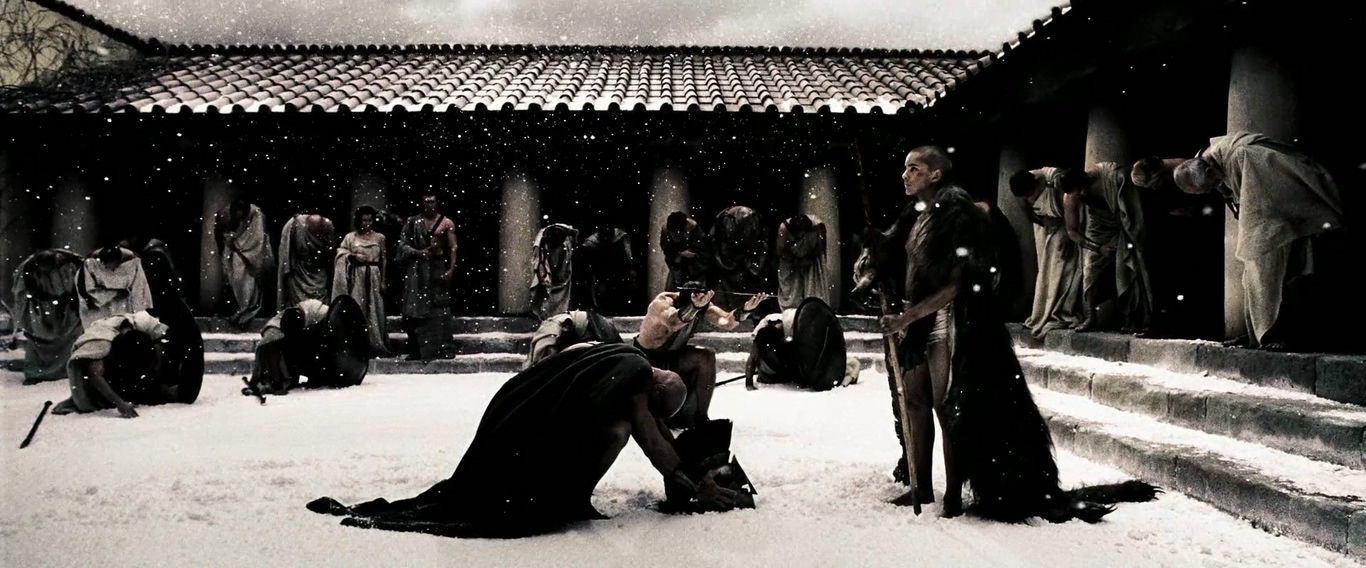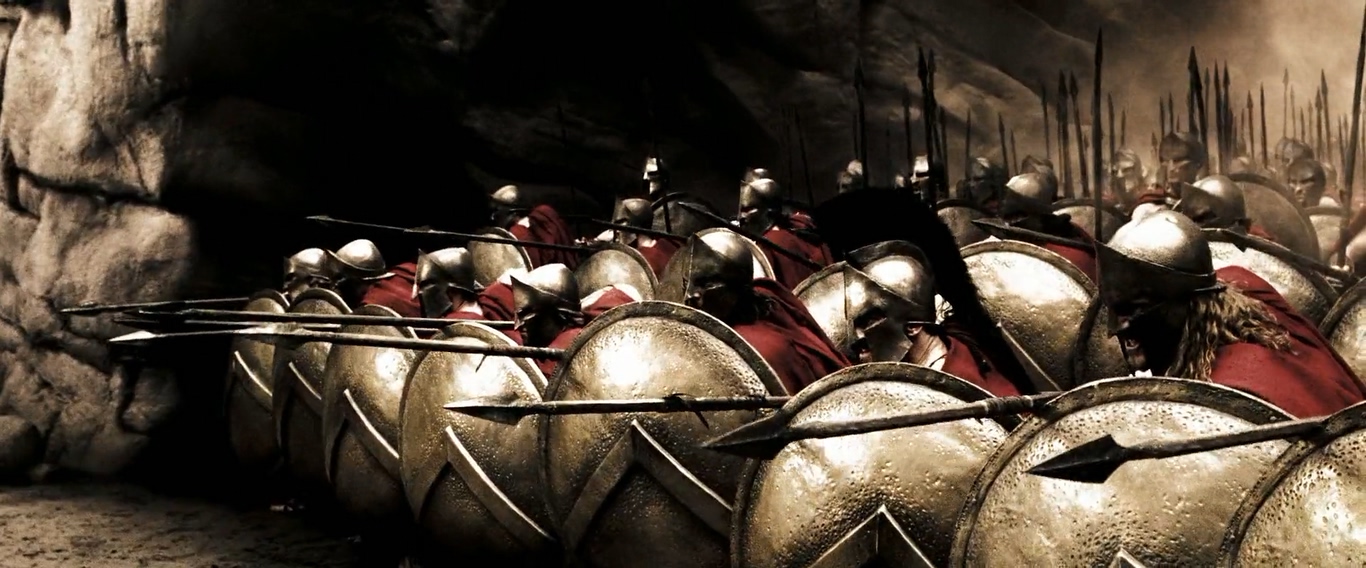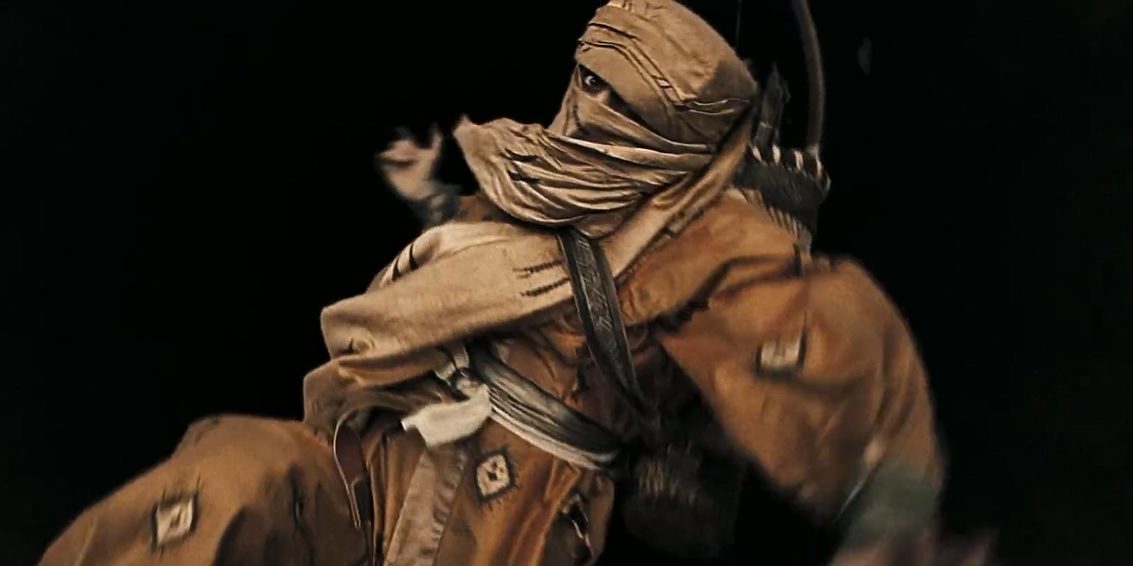Zack Snyder of ‘Justice League‘ fame directed the heavily stylized 2006 historical fantasy war movie ‘300.’ After arrogant Persian messengers disrespect Queen Gorgo and anger King Leonidas, Leonidas defies the Ephors’ orders to wage war against King Xerxes. The prophecy entails that deviating from the tradition ends in disaster. But can King Leonidas and his small army of 300 defeat the Persians against all odds?
The story is painted with a dark and demure golden hue, subsequently dubbed “the crush.” The movie was a groundbreaking success at the box offices, and Gerard Butler’s performance in the central role drew critical attention. After spoofs, sequels, and countless memes, the movie has made its place in popular imagination. But if you are wondering how much of the story borrows from history, let us probe into the matter.
Is 300 Based on A True Story?
‘300’ is partially based on a true story. Although the movie helped evoke a rekindled interest in ancient Greek history, the film is not set out to provide a history lesson. The Persian army naturally did not comprise fantastical creatures, and the world was not painted with the contrast-enhancing “crush.” Zack Snyder’s screen adaptation is a scene-by-scene remake of the eponymous comic book by author and inker Frank Miller, who co-wrote the story with Lynn Varley.

After creating the likes of ‘Daredevil,’ ‘Big Guy and Rusty the Boy Robot,’ and ‘Sin City,’ Frank Miller is not a new name in popular culture. While adapting it for the screen, Snyder mostly adhered to the graphic novel, from the quintessential gore to the color palette. Incidentally, Miller was inspired by Rudolph Maté’s 1962 CinemaScope epic movie ‘The 300 Spartans.’ Miller stumbled upon the film at the age of six. However, he traveled to Greece and did thorough research on the topic before putting the story together, and despite the fantastical appendages, the core story is true to the bone.
Producer Gianni Nunnari acquired the rights to the comic book miniseries for an adaptation, but he was not the first one to make a movie on the Battle of Thermopylae. Previously, director Michael Mann expressed interest in making a movie on the subject, although his source of inspiration was the novel ‘Gates of Fire’ by Steven Pressfield. Michael B. Gordon wrote the screenplay, and Snyder came on board to direct the venture. Miller was involved in the creative process and served as an executive producer.
While on set, Snyder bonded with Miller over their shared interest in low-budget horror movies and samurai films. However, the director sought to amplify the weirdness to make the story more appealing. But most of the story harks back to a historical past. The movie, much like the novel, chronicles a chapter in the Greco-Persian Wars, which started in 499 B.C. and lasted till 449 B.C. The Battle of Thermopylae indeed took place in history; in 480 B.C. The ancient Greek historian Herodotus chronicles the story in detail.
Thermopylae (literally “the Hot Gates,” possibly derived from a hot spring) is a place in the Malian Gulf on the mouth of the Spercheios River, where a narrow strait existed in the past. The small army of the Spartans would be easily outnumbered by the vast army of King Xerxes I, and the inlet proved to be a vantage point for the Spartans. However, the movie employs a great deal of imagination in envisioning the battle. In the film, King Leonidas leaves Sparta with 300 men as his bodyguard, defying the orders of the Ephors. However, this is not how the story panned out.

The religious festival Carnea, in honor of Apollo Carneios, barred the city-state from commencing an armed conflict. The celebration went on for eight days, and Leonidas left early for the battle with his sole personal bodyguard, hoping to buy some time for the coming troop. The rest of the army followed after the end of the festival, hoping they would reach the battlefield before long. In the movie, Leonidas and his army of 300 are joined by a small force of Arcadians led by Daxos on the Greek side against the vast and fantastical Persian army.
However, history tells us that fighting alongside the Spartans was about 3800 Peloponnesians (a combined force of Corinthians, Tegeans, Mantineans, Lacedemonians, Arcadians, Philians, and Myceneans), 1000 Phocians, 700 Thespians, and 400 Theban soldiers. Moreover, the three slaves assigned to a Spartan soldier would add around 900 slaves to the battalion. While the statistics are only an estimate, the point is that the Spartans were not as outnumbered as the story suggests. Although not all of them fought in the battle, around 2000, including the Thebans and Thespians, died on the battlefield.
Because the Thebans and the Thespians were not warrior races like the Spartans, some consider their sacrifices more heroic. Moreover, Spartans did not fight bare-chested, as the story would suggest. They relied quite a lot on bodily armors. Thus considering all the aspects, it seems that the movie is a largely imaginative depiction of the Spartan life and the battle of Thermopylae in particular. But the film does not fail to create a captivating ambiance, enough to spark the viewers’ interest in the obscured chapter in antiquarian history.
Read More: Where Was 300 Filmed?


You must be logged in to post a comment.